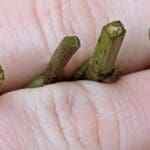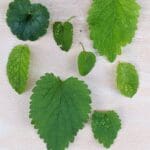Water Mint / Spring / Summer / Autumn / Edible
A fairly common, perennial member of the mentha family, it can be found near water or in damp woodlands.
Common Names
Water Mint
Botanical Name
Mentha aquatica
Scientific Classification
Kingdom – Plantae
Order – Lamiales
Family – Lamiaceae
Physical Characteristics for Water Mint
Stems
Like all members of the mint family they have square stems. Up to 90 cm tall, the stem can be green to purple in colour.

Leaves
The leaves grow in opposite pairs, they are oval and toothed, they can be green to purple depending on age and smell minty when crushed.
Flowers
The individual flowers are tiny but they appear as fluffy looking clusters at the tops of the stems and are lilac to purple in colour.
Roots
The plant produces wide-spreading rhizomes that are brown in colour.
Habitat
Damp environments, riverbanks, canals, damp woodlands.
Known Hazards
There is a risk when harvesting this plant in the wild, due to Liver Fluke (fasciola hepatica). It’s a parasite that infects the livers of cattle and sheep. In humans fluke can causes systems such as fever, malaise, abdominal pain, gastrointestinal issues, anaemia, jaundice, and respiratory illness and chronic inflammation. The parasite makes its way into the water sources via the animal’s faeces. So if you are foraging anywhere down stream of animals there is a risk on contamination.
Luckily cooking destroys the parasite, so it is best not eaten raw.
Some say that the risk of Liver fluke has been exaggerated but I’ll let you decide.
Click here to read more about Liver Fluke.
Could be Confused with
With the distinctive aroma it could only really be confused with other members of the Mint family, this species is distinguished by growing near water.
Click here to read more about the Mint (Lamiaceae) family
Edible Uses
Use as you would shop bought Mint. It can be added to salads, pesto’s and dressing. It makes a lovely refreshing tea.
Notes on Herbal Uses
The plant is a mild sedative and is useful in treating stomach upsets and calming the nerves.
Extra notes from the Foragers
When this species hybridises with Spearmint (Mentha spicata) it produces Peppermint.
Resources
https://www.gardenersworld.com/plants/mentha-aquatica/
https://www.wildlifetrusts.org/wildlife-explorer/wildflowers/water-mint
https://www.gardeningknowhow.com/edible/herbs/mint/growing-watermint.htm













Leave a Reply
You must be logged in to post a comment.